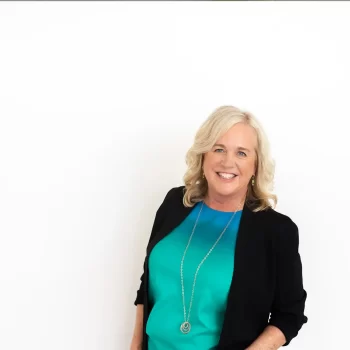Should You Show Your Prices on Your Website or Not?
The short answer: Show your prices on your website for standard offers, starter offers and self-service offers. Use a Call to Action (Book a Call, Email for Pricing, etc.) for custom offers, complex offers and offers where you need to qualify the buyer in order to deliver the best results.
The long, more thoughtful answer and the pros and cons of putting your prices on your website vs. not putting your prices on your website are what we’ll cover in the rest of the post.
Should Your Website Be an Open Book (of Prices)?
If you are a consultant, a coach or someone who offers creative services (copywriter, website designer, etc.), you have probably struggled with whether or not to show your prices on your website. And while the short answer at the top of the article offers a framework for thinking about it, there are some finer points to consider so you can feel confident about your decision.
Here are some of the concerns I hear from clients:
“If I show my prices on my website and they’re too high, I might scare off potential customers.”
“If I show my prices on my website, the competition will just undercut me.”
“If I don’t show my prices on my website, I might end up wasting time with a lot of unqualified leads.”
Note: There are two kinds of qualified leads here. The first is customers who can’t (or aren’t willing) to pay what you charge. But the second is costumer’s who won’t get a good outcome because they aren’t at a point where your service can make a real difference for them. This is especially important if you offer any kind of guarantee.
This post will explore both sides and help you make an informed decision.
The Case for Displaying Prices: Attract the Right Clients, Save Time, Build Trust
Displaying prices on your website has a number of clear benefits. The top one is that it will save you time responding to price inquiries. Additionally it can:
- Help attract qualified leads because people who aren’t willing to pay your rates will opt out
- Build trust and transparency with your audience
- Position you in the market (it will quickly be clear if you are a premium or value offering)
As I said at the top of the article, showing your prices works well for standard offers, starter offers and self-service offers.
- Standard offers: A pre-packaged product that has regular parameters that don’t change. One example of this might be coaches or therapists who have a regular hourly rate. (If you’re trying to figure out your hourly rate, my 60-minute pricing workshop can help.) Another might be a graphic designer who charges a flat rate for logo design with a fixed number of revisions.
- Starter offers: If your offers cover a variety of price points and you have an entry level offer, showing your prices on your website may also help draw clients in who are looking for a less risky way to work with you before they commit to your signature offer. These clients are probably the same ones who might not take the extra time to reach out and inquire about your prices.
- Self-service offers: These are offers that have been fully productized. Offers that customers can buy on their own and can receive the end result without further interaction with you. Examples of this might be digital courses or template downloads.
Tips: How to effectively present prices on your website
- Show your value not just your numbers
- If you sell multiple versions of the same product with increasing benefits at different price points (ex: a bronze, silver and gold package), include a comparison chart
The Case for NOT Displaying Prices: Opportunity to Address Objections and Customize Offers
Not displaying prices on your website gives you the opportunity to directly interact with the potential buyer and overcome objections which may lead to a better chance of closing the sale. Additionally, not showing your prices allows you to:
- Learn more about the clients specific needs so you can create a customized offering
- Personalize the quote based on the client
- Connect to the client personally which may lead to repeat sales
As I suggested at the top of the article, encouraging the potential customer to reach out to you regarding pricing works well for custom offers, complex offers and offers where you need to qualify the buyer to deliver the best results.
- Custom Offers: Offers where the services you deliver might change depending on the client’s level of sophistication and where they are in their business. If you are an interior designer the scope of your project is going to be very different if you have a client building out a blank space vs. redecorating an existing space.
- Complex Offers: These are offers that have a lot of moving parts or where you offer a broad range of services that can be hooked together in various ways. For instance, if you are a creative services agency you might offer social media strategy, social media plans and a done-for-you social media service. Explaining how these work together and how the client might engage with you is usually more effective in a sales meeting.
- Qualified Offers: If you are a consultant or coach, you may be better positioned to deliver results with clients who have certain characteristics. For instance, there are business coaches who only work with entrepreneurs who are already generating $100,000 in their businesses. In order to make sure someone is positioned to benefit from your services, you may need to communicate with them directly and ask questions so you know you can deliver a successful result.
Tips: Alternative Ways to Address Pricing on Your Website
- Prices start at….. Using this phrase can help generate some of the time savings of showing a price list without locking yourself in
- If you use a “Book a Call” button, use a service that allows auto-scheduling so your potential buyer can feel like they’re moving forward
Deciding What's Right for You
In order to make a final decision on whether or not to unveil your rates on your website, the final thing to consider is your target audience. The better you know your ideal clients, the more clear it should be whether or not you should show your prices. Budget conscious audiences definitely seek upfront transparency. High-rollers on the other hand are likely going to want more interaction before they make a big investment.
If you’re still on the fence: let’s look at some final pros and cons each strategy:
Show Your Prices
Pros:
- Ready to buy clients love the clarity of seeing prices
- Transparency builds trust
- No gap created between buyer intent and necessary information
Cons:
- Audiences looking for a personal touch might not think you’re a good fit
- Competitors can see your pricing strategy
- Can be awkward if it’s a non-standard product and you need to adjust
Hide Your Prices
Pros
- Opportunity to customize your offer for specific needs
- Messages premium brand and exclusivity
- Opportunity to price based on what you think the client is willing to pay
- Opportunity to personally communicate value and overcome objections
Cons
- Lack of transparency may lead them to another provider
- Quotes take time and effort
- Scheduling something for the future negatively impacts momentum
Can You Have It Both Ways? Finding the Pricing Formula that Works for You
Depending on your business you may want to experiment with both strategies and use the outcome to make your final decision. You could try an A/B test of two landing pages – one that has published prices and one that has “Book a Call” or other CTA for pricing.
Whatever you decide, remember that it isn’t permanent and if you feel this last step in the client conversion process is bringing in the wrong kinds of clients or limiting sales, you can always make adjustments.
I hope this article helped you with the decision of whether or not you should put your prices on your website. If you’re a consultant, coach or creator and you’re struggling with what those prices should be, my pricing toolkit can help you get confidence around how much you charge.




